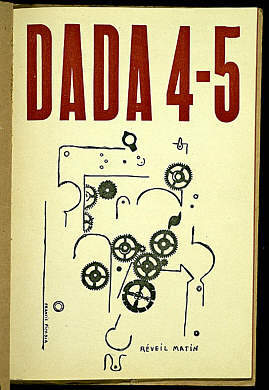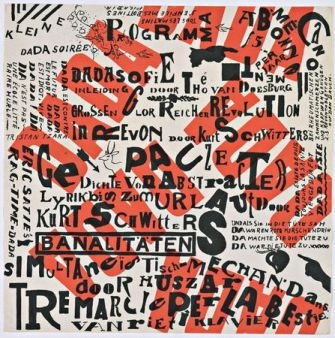NOTASANOTATACIONESNOTAS
27/05/2014
Rita Library (Processing)
Hacer hablar al lenguaje
La retirada del autor como totalidad
Una apertura a la interacción hombre-maquina
Apertura a la perdida de control
Eupalinos o el Arquitecto - Paul Valery
Objeto ambiguo, indeterminación de la producción
Creado o no por el hombre
Proviene o no de la naturaleza
Procesos que se crean independientemente de la voluntad del hombre
Etimología de ‘escritura’: ruptura, herida, marca
Diccionario
Generación de proyectos de aprendizaje y estimulacion de la lectura y la escritura.
Poesía concreta
Poesía y programación
Programa/pantalla:
Programa 1:
Un texto que presente la idea de sintagma y paradigma de saussure
Escriba opciones para un texto al tiempo que se esta escribiendo!
Programa 2
Busqueda de las palabras más usadas y menos usadas en un texto
Resultado 1: Repreentación grafica de esos resultados
Resultado 2: Creación de un poema u otro texto con esas palabras
Bases de datos
Porgrama 3:
Mostrar el código de una imagen como si fuera el texto de una imagen.
Proyectarlo en un vidrio o pantalla transparente.
Modificar el código para que la imagen se altere paulatinamente hasta que desaparezcan ambos.
Superponer a una imagen su texto-código
Proyectarlo sobre un vidrio que permita ver los dos lados del plano
Vincular imagen generativa y escritura
28/05/2014
Literature
Writers such as Tristan Tzara, Brion Gysin, and William Burroughs used the cut-up technique to introduce randomization to literature as a generative system. Jackson_Mac_Low produced computer-assisted poetry and used algorithms to generate texts; Philip M. Parker has written software to automatically generate entire books. Also see Oulipo, the Eureka Machine, Electronic literature, Spam Lit, Informationist poetry, Language game, and Prehistoric Digital Poetry.
Pensar en modos de graficar recurrencias textuales.
Interpretar esas recurrencias.
Buscar intervenir cadenas textuales con captura de movimiento.
Buscar intervenir processing + video/resolume + interacción + texto
////////////////////////////
Questions of generative art
The discourse around generative art can be characterised by the theoretical questions which motivate its development. McCormack et al. propose the following questions, shown with paraphrased summaries, as the most important:
Can a machine originate anything? Related to machine intelligence - can a machine generate something new, meaningful, surprising and of value: a poem, an artwork, a useful idea, a solution to a long-standing problem?
What is it like to be a computer that makes art? If a computer could originate art, what would it be like from the computer's perspective?
Can human aesthetics be formalised?
What new kinds of art does the computer enable? Many generative artworks do not involve digital computers, but what does generative computer art bring that is new?
In what sense is generative art representational, and what is it representing?
What is the role of randomness in generative art? For example, what does the use of randomness say about the place of intentionality in the making of art?
What can computational generative art tell us about creativity? How could generative art give rise to artefacts and ideas that are new, surprising and valuable?
What characterises good generative art? How can we form a more critical understanding of generative art?
What can we learn about art from generative art? For example, can the art world be considered a complex generative system involving many processes outside the direct control of artists, who are agents of production within a stratified global art market.
What future developments would force us to rethink our answers?
Another question is of postmodernism—are generative art systems the ultimate expression of the postmodern condition, or do they point to a new synthesis based on a complexity-inspired world-view?
2/06/2014
Writting with out words
The project explores methods of visually-representing text and visualises the differences in writing styles when comparing different authors. While I focused on 20th-century English-language authors, the main text I chose to work with was On the Road, by Jack Kerouac. Sentence length, themes, parts-of-speech, sentence rhythm, punctuation, and the underlying structure of the text were all explored visually.
By applying these approaches to different pieces of literature, visual comparisons of the writing styles of various authors could be made, and the complexity of the structure of their literary works could be highlighted. However, I knew I didnít want to use expressive typography or imagery to create a subjective representation of the information. Instead, I wanted the graphics to be based on something quantifiable.
However, searching for information that is constant in every piece of literature is difficult, what with the numerous themes, storylines, and words used in all of English-language literature. I realized I needed to gather data that related to the structure of English language instead of working with literary themes as a method of measurement. Using the sentence as the basis for my information visualizations meant I would be able to measure and map quantifiable information that could be found easily throughout the English language.
So, gathering numerical data based on the structure of the novel and of a sentence seemed to be the most appropriate solution. Iíve always enjoyed u
http://www.stefanieposavec.co.uk/-everything-in-between/#/writing-without-words/
AUTOBIOGRAFíA DINÁMICA
http://www.stefanieposavec.co.uk/-everything-in-between/#/myfry/
2/06/2014
TEXT MINING
http://www.statsoft.com/Textbook/Text-Mining
http://en.wikipedia.org/wiki/Text_mining
Text mining, also referred to as text data mining, roughly equivalent to text analytics, refers to the process of deriving high-quality information from text. High-quality information is typically derived through the devising of patterns and trends through means such as statistical pattern learning. Text mining usually involves the process of structuring the input text (usually parsing, along with the addition of some derived linguistic features and the removal of others, and subsequent insertion into a database), deriving patterns within the structured data, and finally evaluation and interpretation of the output. 'High quality' in text mining usually refers to some combination of relevance, novelty, and interestingness. Typical text mining tasks include text categorization, text clustering, concept/entity extraction, production of granular taxonomies, sentiment analysis, document summarization, and entity relation modeling (i.e., learning relations between named entities).
Text analysis involves information retrieval, lexical analysis to study word frequency distributions, pattern recognition, tagging/annotation, information extraction, data mining techniques including link and association analysis, visualization, and predictive analytics. The overarching goal is, essentially, to turn text into data for analysis, via application of natural language processing (NLP) and analytical methods.
A typical application is to scan a set of documents written in a natural language and either model the document set for predictive classification purposes or populate a database or search index with the information extracted.
APPLICATIONS
The technology is now broadly applied for a wide variety of government, research, and business needs. Applications can be sorted into a number of categories by analysis type or by business function. Using this approach to classifying solutions, application categories include:
Enterprise Business Intelligence/Data Mining, Competitive Intelligence
E-Discovery, Records Management
National Security/Intelligence
Scientific discovery, especially Life Sciences
Sentiment Analysis Tools, Listening Platforms
Natural Language/Semantic Toolkit or Service
Publishing
Automated ad placement
Search/Information Access
Social media monitoring
OPEN MIND COMMON SENSE
http://en.wikipedia.org/wiki/ConceptNet#Database_and_website
Human-based Computation Game
http://en.wikipedia.org/wiki/Game_with_a_purpose
11/06/2012
VIDEOJUEGOS!!
*** http://aliendovecote.com/resources/twine-snippets/
http://aliendovecote.com/my-games/games-ive-made/
http://aliendovecote.com/uploads/twine/mutant.htm
http://aliendovecote.com/uploads/twine/vampire/vampire.html
squidlarkin/ Develop a Leather-based Bloodstream
http://aliendovecote.com/uploads/twine/others/trashjam/leather.html#
http://aliendovecote.com/uploads/twine/others/trashjam/love.html#8
http://aliendovecote.com/uploads/twine/LD26/ruin.html#1
CHOOSATRON
http://storycade.com/interview-jerry-belich-choosatron/
PaperBlur
http://20strokes.paperblurt.com/
Dan Cox
http://videlaisstudios.info/games/2013/twine/elevator.html
Deirdra Kiai
http://deirdrakiai.com/impostor/
DAVID T. MARCHAND
http://www.davidtm.com.ar/media/eioioio.html
http://www.bagfullofwrong.co.uk/Other/Calories.html
23/06/2014
***Primer borrador de proyecto cuatrimestral:
Descripción de la obra:
El proyecto consiste en la producción de un texto/ novela gráfica/ cuento sustentado sobre tres modos de producción vinculados a la literatura y las artes electrónicas: videojuegos, literatura generativa y visualización de datos.
Triángulo de las bermudas. Una historia sobre píxeles, glitchs y las fuerzas de la naturaleza; está estructurada como un juego al estilo “elige tu propia aventura” y narra las experiencias de un personaje que tras enfrentar un naufragio en el Triángulo de las Bermudas se ve involucrado en un universo no-lineal compuesto por palabras, pixeles y figuras geométricas en el cual se verá forzado a circular hasta encontrar el código que le permita salir. Para operar en este universo el personaje/lector deberá producir textos, contestar preguntas y usar imágenes y refranes populares como herramientas para avanzar. Al mismo tiempo se verá acompañado de descripciones, colores, tipografías y respuestas audiovisuales que recrearan una experiencia textual lúdica.
Formalmente, el texto se construye sobre la plataforma virtual twine, y parte de una serie de enunciados predeterminados que a medida que avanza la narración, se mezclan con información requerida al usuario/lector/jugador.
La historia es siempre distinta en tanto la instancia de producción generativa permite una muy amplia combinatoria de los enunciados, a los que además se agregan los enunciados ingresadas por el propio jugador.
La idea es que la historia este acompañada de una serie de estímulos audiovisuales cuya relación con el texto esté también determinada por un algoritmo de combinatoria generativa. Así por ejemplo la historia comienza in media res con el personaje que se hunde junto a su barco. Su pensamientos estarán acompañados de una tipografía cuyo tamaño varia letra a letra mientras se le pide al usuario que elija los colores que el personaje visualiza en su proceso de hundimiento, así como que agregue otras posibles sensaciones. Como resultado de la elección de elementos plásticos tales como colores, formas, imágenes, etc., y el ingreso de nuevos datos; se generará una instancia final de la historia conectada a diversas opciones de visualización ubicadas en la plataforma Processing, cuyo entorno de programación devolverá una imagen que funcionará como el código que permitirá al personaje salir del universo ficcional propuesto. En una de las posibilidades, esta imagen será por su puesto completamente abstracta y comprensible sólo por las reglas y proposiciones de una lengua que el lector desconoce; en otra lo devolverá al principio, etc.
La historia podrá extenderse tanto como el lector desee y podrá jugarse/leerse en diversos dispositivos móviles.
Preguntas:
1) ¿Cuáles son las formas de interacción con un texto?
2) ¿Cómo se traduce un texto a imagen y viceversa?
3) ¿Qué información o conocimiento podemos obtener de esta traducción/interacción?
30/06/2014
Nuevas ideas:
El hombre en la multitud
Baudelaire
Referencias al modernismo literario
Bases de datos
Juegos de lenguaje
Saussure
Sintagma/paradigma
Textos de inmersión
La lectura como decisión
Programación de textos
Una doble escritura


Tristan Tzara.
PARA HACER UN POEMA DADAÍSTA
Coja un periódico.
Coja unas tijeras.
Escoja en el periódico un artículo de la longitud que cuenta darle a su poema.
Recorte el artículo.
Recorte en seguida con cuidado cada una de las palabras que forman el artículo y métalas en una bolsa.
Agítela suavemente.
Ahora saque cada recorte uno tras otro.
Copie concienzudamente en el orden en que hayan salido de la bolsa.
El poema se parecerá a usted.
Y es usted un escritor infinitamente original y de una sensibilidad hechizante, aunque incomprendida del vulgo.
Brion Gysin.
Gysin le dijo a Burroughs que la escritura estaba 50 años atrasada con respecto a la pintura. Burroughs luego utilizó la "técnica de recortes" en sus escritos. Este experimento terminó con la obra "Interzone" y cambió dramáticamente el panorama de la literatura norteamericana.
Stefanie Posavec
Jenny Holzer
Diane Lange
Santiago Ortiz
RAYUELA
Diane Lange